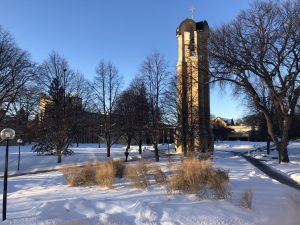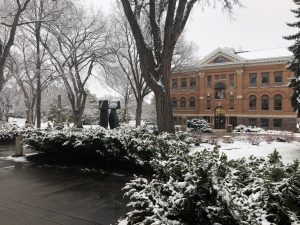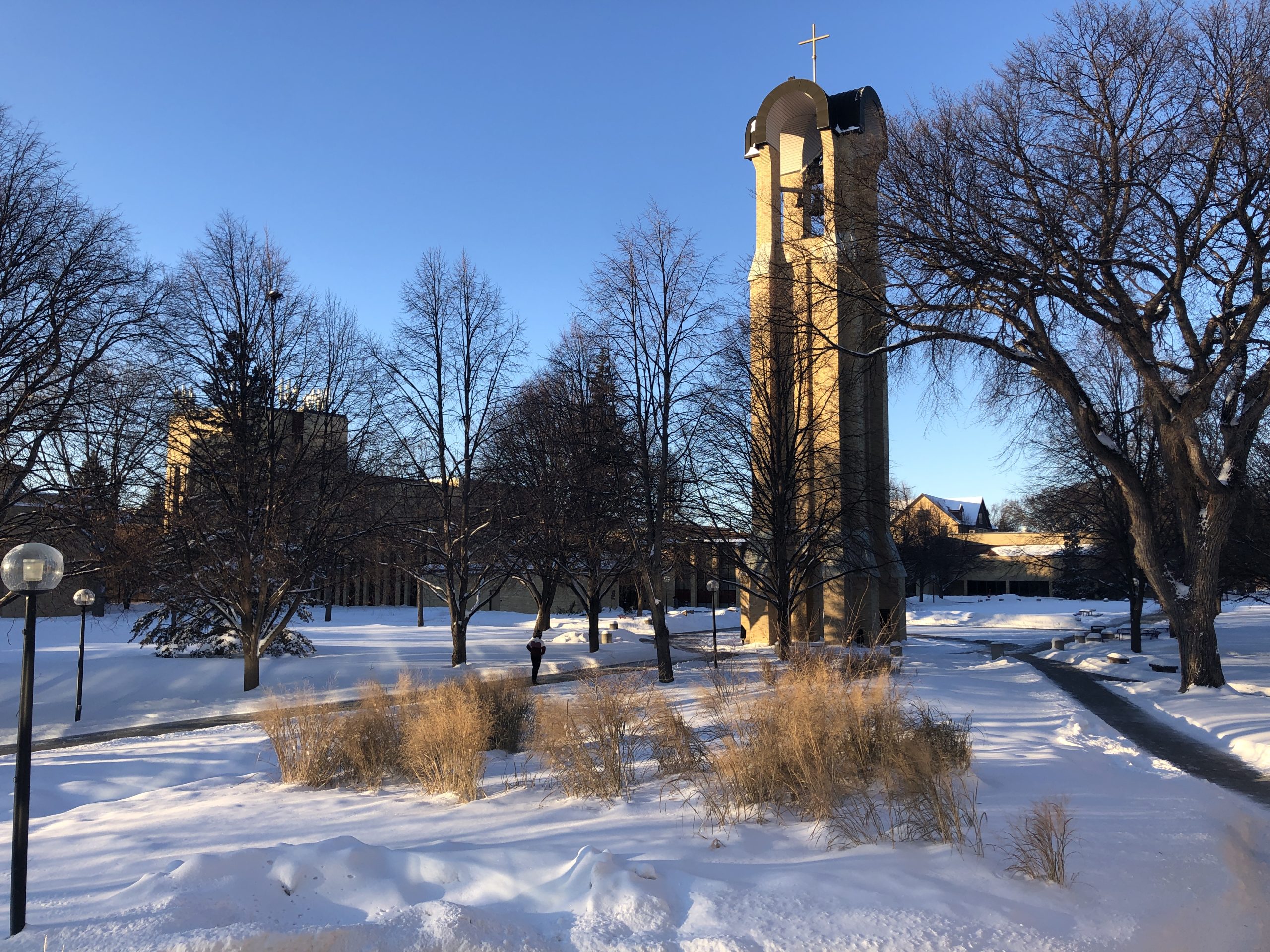In the morning after a heavy snowfall, students often check weather reports, rummage through sweaters and reload inboxes for the “class canceled” email. Less likely to be at the forefront of their mind? The people whose efforts make the commutes possible.
Snow removal on campus means clearing 210 doorways, 10 miles of sidewalks, 17 parking lots, campus-owned streets, fire lanes and walking corridors, such as those from Park Region all the way to Olson Forum.
“When we get heavy snows, people who normally clean are out shoveling, and people who normally are doing plumbing or electrical are out shoveling or running equipment to move snow,” said Dallas Fossum, director of Facilities Management.
Facilities Management has five grounds crew members who work on snow removal regularly, with 30 or more additional staff members being recruited when necessary.
As staff members are pulled from many areas of work, delays may be expected in non-essential tasks around campus.
Five hundred to six hundred working hours is the time it takes to remove a 10-12 inch snowfall from campus, and many are unaware of the extraordinary effort it takes to remove snow, said Fossum. “A lot of people (are surprised) to see the volume of what it is.”

When a big snowfall comes, the hours of these workers shift around, said Grounds Supervisor Jerry Raguse. “Since we can’t schedule the snow, the grounds crew’s hours vary. Most of the time we start early in the mornings to get the campus ready, sometimes at 3 or 4 a.m.”
Raguse also said that snow on the weekends also occupies their time, with staff having to potentially work seven days of the week to administer necessary removal. The staff also removes snow for events when they occur outside of regular business hours.
While yearly snowfall fluctuates from year to year, with last year being milder than this year, Raguse said that out of his 33 years working at Concordia, the winter of 1996-1997 was most memorable.
“We had over 100 inches of snow,” said Raguse. “I spent many nights in our garage to keep emergency routes open and even pick up the cooks with our four-wheel-drive vehicle so they could get to campus and prepare meals.”
In years of average snowfall, the biggest challenges of snow removal remain the intense amount of time it requires, along with simpler issues such as vehicles that remain in non-overnight lots overnight. “It slows us down a lot to go around vehicles,” Raguse said.

Another core goal of Facilities Management in regards to snow removal is to provide maximum accessibility for everyone on campus. Director of Disability Services Matthew Rutten notes that there are students on campus who use wheelchairs, as well as students, staff and faculty with physical disabilities that require further accessibility measures.
“At any given time, there may be additional students and employees who have a compromised ability (to move around campus),” such as a knee or foot injury, Rutten said. Drifting snow and icy sidewalks affect all Cobbers, notes Rutten. “The winter months can introduce additional hazards and obstacles to all individuals on campus.”
Facilities Management works closely with the Disability Services to ensure the accessibility of campus, from clearing major pathways to monitoring the class schedules and locations of students who do use wheelchairs. Accessibility is a priority of both offices.
“If we are a little behind on snow removal, we’re working on it,” Fossum said. Fossum and Rutten both encourage students to reach out to Facilities Management or Disabilities Services if they see a big issue with snow or accessibility on campus.

